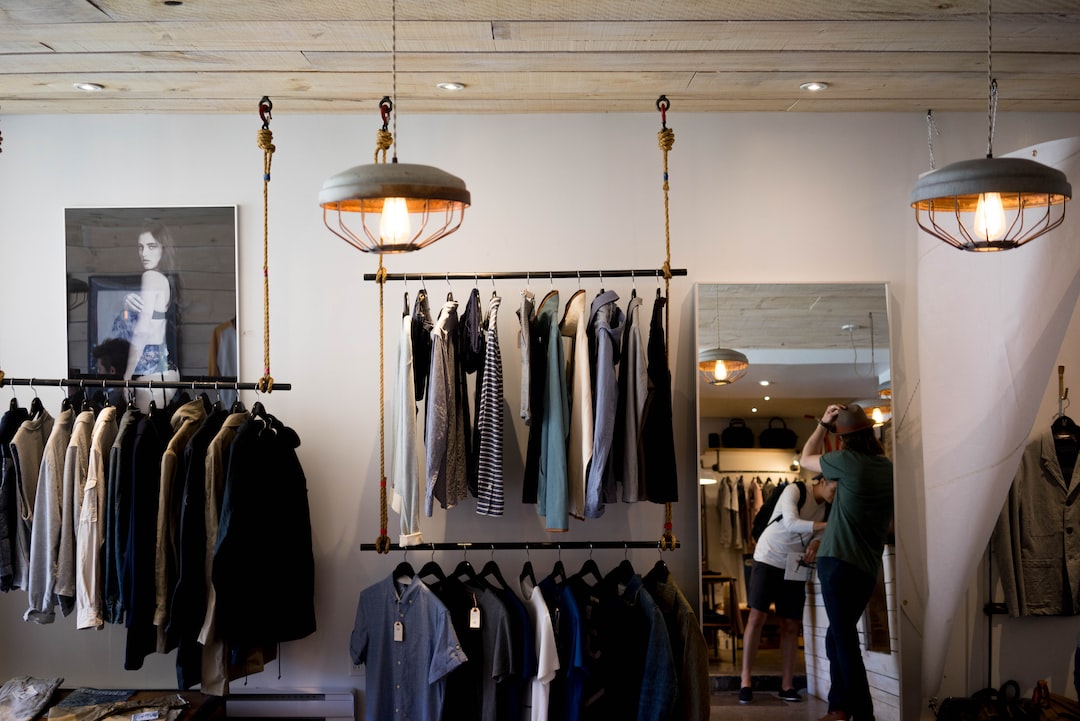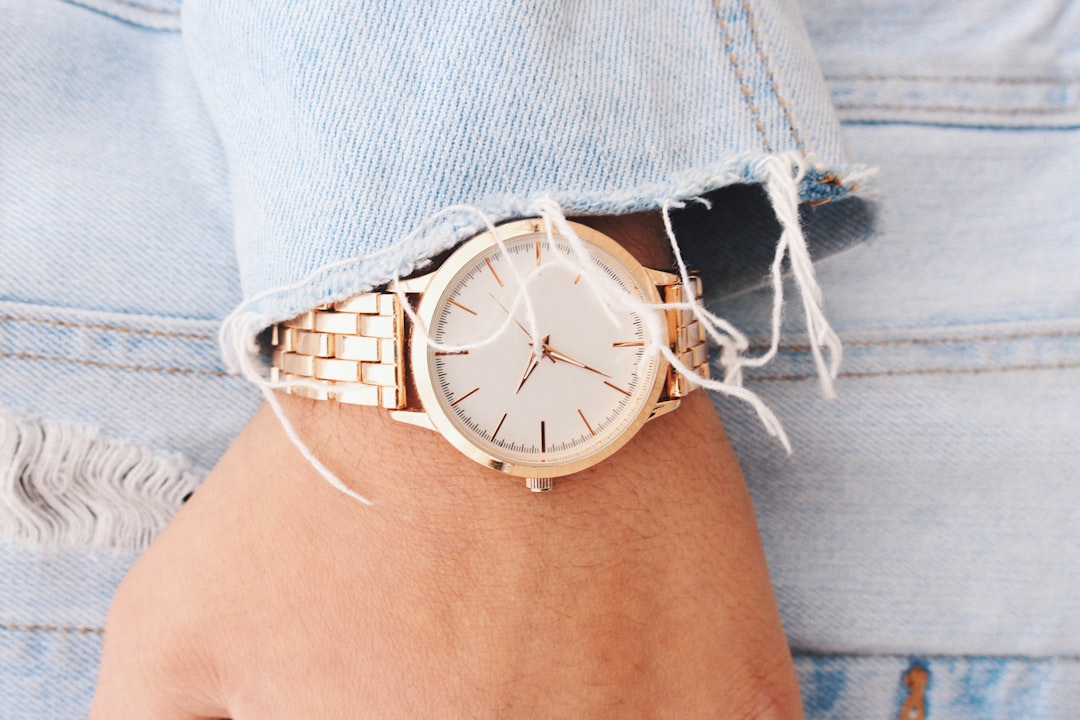Artificial Intelligence (AI) is revolutionizing the fashion industry in ways never seen before. From predicting trends to personalizing clothing, enhancing online shopping experiences to reducing waste and environmental impact, AI is transforming the way fashion is made, marketed, and consumed.
The fashion industry has always been known for being fast-paced, dynamic, and ever-changing. Keeping up with the latest trends and styles can be a daunting task, even for the most fashion-savvy individuals. However, with the rise of AI, fashion forecasting has become more accurate and efficient than ever before.
AI-powered algorithms can analyze vast amounts of data from social media, fashion blogs, and online shopping sites to predict what styles and trends will be popular in the upcoming seasons. This not only helps fashion designers and retailers to stay ahead of the curve but also enables them to make informed decisions about what products to produce and stock.
Personalization is another area where AI is making waves in the fashion industry. With the help of machine learning algorithms, fashion retailers can now offer customized clothing and accessories to their customers. By analyzing data such as body measurements, style preferences, and purchase history, AI can suggest personalized recommendations and create unique pieces tailored to each individual’s needs.
Virtual try-ons are also becoming more popular in the fashion industry, thanks to AI. By using augmented reality (AR) and virtual reality (VR) technologies, customers can try on clothes and accessories virtually before making a purchase. This not only enhances the online shopping experience but also reduces the likelihood of returns and exchanges.
Sustainability is a growing concern in the fashion industry, and AI is helping to address this issue. By using predictive analytics, fashion retailers can optimize their supply chains and reduce waste. AI can also help to identify more sustainable materials and production methods, leading to a more environmentally friendly fashion industry.
Finally, AI is streamlining the production process in the fashion industry. By automating tasks such as fabric cutting and sewing, AI is reducing the need for manual labor and increasing efficiency. This not only saves time and money but also ensures that products are produced to a consistently high standard.
In conclusion, the rise of AI in the fashion industry is transforming the way we think about fashion. From predicting trends to personalizing clothing, enhancing online shopping experiences to reducing waste and environmental impact, AI is making fashion more accessible, efficient, and sustainable than ever before. The future of fashion with artificial intelligence is bright, and we can’t wait to see what’s next.
Fashion Forecasting: Predicting Trends with AI
As the fashion industry continues to evolve, artificial intelligence (AI) is playing a crucial role in revolutionizing the way trends are predicted. Fashion forecasting has traditionally been a highly subjective and time-consuming process, relying on the intuition and experience of industry experts. However, with the advent of AI, this process has become more data-driven and efficient.
One of the primary advantages of using AI for fashion forecasting is the ability to process vast amounts of data in a short amount of time. This includes analyzing social media trends, consumer behavior, and even weather patterns to determine what styles and colors are likely to be popular in the coming seasons. By analyzing this data, AI algorithms can provide accurate and reliable predictions for fashion trends, allowing designers and retailers to stay ahead of the curve.
Another key benefit of AI in fashion forecasting is the ability to identify emerging trends before they become mainstream. By analyzing data from a variety of sources, AI algorithms can identify patterns and trends that may not be immediately apparent to human analysts. This allows designers and retailers to create products that are ahead of the curve, giving them a competitive edge in the marketplace.
AI is also helping to democratize the fashion industry by making trend forecasting more accessible to smaller businesses and independent designers. In the past, trend forecasting was largely the domain of large fashion houses and industry insiders. However, with the rise of AI-powered tools and platforms, even small businesses and independent designers can access powerful trend forecasting tools that were once out of reach.
AI is transforming the way fashion trends are predicted, making the process more data-driven, efficient, and accessible. By leveraging the power of AI algorithms, designers and retailers can stay ahead of the curve and create products that resonate with consumers. As the fashion industry continues to evolve, it’s clear that AI will play an increasingly important role in shaping the future of fashion.
By analyzing data from a variety of sources, AI algorithms can identify patterns and trends that may not be immediately apparent to human analysts.
Personalization: Customizing Clothing with AI
As technology advances, the fashion industry is becoming increasingly innovative in its use of artificial intelligence (AI) to bring new levels of personalization to the shopping experience. AI is allowing fashion brands to create customized clothing and accessories that cater to individual preferences and styles.
The ability to personalize clothing is not a new concept, but the use of AI is revolutionizing the process. With AI, fashion brands can analyze a customer’s purchase history, browsing behavior, and social media activity to gain insights into their preferences and style. This information can then be used to create personalized recommendations and even customized clothing.
One of the most exciting applications of AI in personalized fashion is the use of 3D scanning technology. This technology allows customers to create a digital avatar of themselves, which can then be used to try on virtual clothing. AI algorithms analyze the customer’s body shape and size to create a perfectly fitting garment. This eliminates the need for customers to try on multiple sizes and styles, reducing the frustration and time-consuming process of traditional shopping.
In addition to creating customized clothing, AI is also being used to personalize the shopping experience. Chatbots and virtual assistants are being used to provide customers with personalized recommendations and styling advice. AI can also analyze a customer’s purchase history and browsing behavior to send targeted promotions and discounts.
Personalization is becoming an increasingly important factor in the fashion industry, as customers seek out unique and customized products. AI is enabling fashion brands to offer personalized products and experiences at scale, which was previously impossible. With the use of AI, fashion brands can create a new level of personalization that is changing the way we shop for clothing and accessories.
AI is allowing fashion brands to create customized clothing and accessories that cater to individual preferences and styles.
Virtual Try-Ons: Enhancing the Online Shopping Experience with AI
As the world becomes increasingly digitized, online shopping has become the norm. However, one of the biggest challenges for online retailers is ensuring that their customers are satisfied with their purchases. This is particularly true for clothing, where fit and style are crucial factors in a customer’s decision to buy. Enter virtual try-ons, a new technology that is revolutionizing the online shopping experience.
Virtual try-ons use artificial intelligence to create a virtual model of the customer that can be used to try on clothes in a virtual environment. This allows customers to see how clothes will look on them without having to physically try them on. The technology uses a combination of computer vision and machine learning to create a realistic representation of the customer’s body and to simulate the way the clothes will fit and move.
One of the key benefits of virtual try-ons is that they can help to reduce the number of returns that retailers receive. When customers are able to see how clothes will look on them before they make a purchase, they are more likely to be satisfied with their purchase and less likely to return it. This can save retailers significant amounts of money in shipping and handling costs.
Virtual try-ons also have the potential to enhance the overall online shopping experience. By allowing customers to try on clothes in a virtual environment, retailers can create a more immersive and engaging shopping experience. This can help to increase customer loyalty and drive sales.
Of course, there are still some challenges that need to be addressed when it comes to virtual try-ons. One of the biggest challenges is ensuring that the virtual models accurately represent the customer’s body. This requires a significant amount of data and sophisticated algorithms to ensure that the models are accurate and realistic.
Despite these challenges, virtual try-ons have the potential to revolutionize the way that we shop for clothes online. By using artificial intelligence to create realistic virtual models, retailers can provide a more engaging and satisfying shopping experience for their customers. As the technology continues to improve, we can expect to see even more innovative applications of virtual try-ons in the future.
Enter virtual try-ons, a new technology that is revolutionizing the online shopping experience.
Sustainability: Reducing Waste and Environmental Impact with AI
As the fashion industry continues to grow, so too does its impact on the environment. From the production of textiles to the disposal of clothing, every step of the fashion supply chain has the potential to contribute to environmental degradation. However, with the help of artificial intelligence (AI), the industry may be able to reduce its waste and environmental impact.
One way that AI can help with sustainability in fashion is through the optimization of production processes. By analyzing data on the production of textiles and clothing, AI algorithms can identify areas where waste can be reduced or eliminated. For example, AI can help manufacturers optimize their fabric cutting processes, reducing the amount of fabric that is wasted during production.
Another way that AI can help with sustainability in fashion is through the development of new materials. By analyzing data on the properties of different materials, AI can help researchers identify new materials that are more sustainable than traditional ones. For example, AI can help researchers develop new textiles that are more biodegradable or require fewer resources to produce.
AI can also help with sustainability in fashion by enabling more efficient supply chain management. By analyzing data on the movement of goods throughout the supply chain, AI algorithms can identify areas where transportation can be optimized, reducing the environmental impact of shipping and logistics.
Finally, AI can help with sustainability in fashion by enabling more sustainable consumer behavior. By analyzing data on consumer preferences and behavior, AI algorithms can help retailers develop more sustainable products and marketing strategies. For example, AI can help retailers identify which products are most likely to be returned, allowing them to reduce waste by producing fewer of those products.
Overall, AI has the potential to be a powerful tool for reducing waste and environmental impact in the fashion industry. By enabling more efficient production processes, developing new sustainable materials, optimizing supply chain management, and promoting more sustainable consumer behavior, AI can help the industry move towards a more sustainable future.
By analyzing data on consumer preferences and behavior, AI algorithms can help retailers develop more sustainable products and marketing strategies.
Supply Chain Optimization: Streamlining Production with AI
The fashion industry is known for its complex supply chains, from sourcing raw materials to production and distribution. However, with the rise of AI, the industry is experiencing a significant shift towards more efficient and streamlined processes. AI can optimize the supply chain by automating various tasks and providing real-time data insights.
One of the primary ways AI is transforming the supply chain in fashion is through predictive analytics. By analyzing past sales data and market trends, AI algorithms can forecast demand and optimize production schedules accordingly. This means that companies can produce the right amount of products at the right time, reducing the risk of overproduction and waste.
AI can also improve inventory management by tracking stock levels and predicting when items will need to be restocked. This can prevent stockouts and ensure that products are always available when customers want them. Additionally, AI can help companies make more informed decisions about sourcing materials and selecting suppliers by analyzing data on quality, cost, and lead times.
Another area where AI is making a significant impact is in production optimization. By using machine learning algorithms to analyze production data, companies can identify inefficiencies and areas for improvement. This can lead to faster production times, lower costs, and higher quality products.
Overall, AI is revolutionizing the fashion industry’s supply chain by providing real-time data insights, optimizing production schedules, improving inventory management, and identifying areas for improvement. As the technology continues to evolve, we can expect to see even more significant changes in the way fashion companies operate.
By analyzing past sales data and market trends, AI algorithms can forecast demand and optimize production schedules accordingly.
Conclusion: The Future of Fashion with Artificial Intelligence
As we have seen in the previous sections, artificial intelligence has already begun to revolutionize the fashion industry in a number of ways. From predicting trends to customizing clothing to streamlining production, AI is helping fashion brands to become more efficient, sustainable, and customer-focused.
Looking ahead, we can expect to see even more exciting developments in the intersection of AI and fashion. As machine learning algorithms become more sophisticated and data-driven insights become more accurate, we can expect to see a new era of fashion that is truly personalized and sustainable.
One area where AI is likely to have a major impact is in the design process itself. With the help of machine learning algorithms, designers will be able to generate new designs based on customer preferences, historical trends, and other data points. This will not only help to reduce waste and improve sustainability, but it will also allow fashion brands to create truly unique and personalized garments for their customers.
Another area where AI is likely to have a major impact is in the supply chain. By using predictive analytics and real-time data, fashion brands will be able to optimize their production processes, reduce waste, and improve the overall efficiency of their operations. This will not only help to improve profitability, but it will also help to reduce the environmental impact of the fashion industry.
In conclusion, the rise of artificial intelligence in fashion represents a major opportunity for brands to become more efficient, sustainable, and customer-focused. By embracing new technologies and data-driven insights, fashion brands can create a new era of fashion that is truly personalized and sustainable. As we move forward, it will be exciting to see how AI continues to transform the fashion industry and what new innovations will emerge in the years to come.





